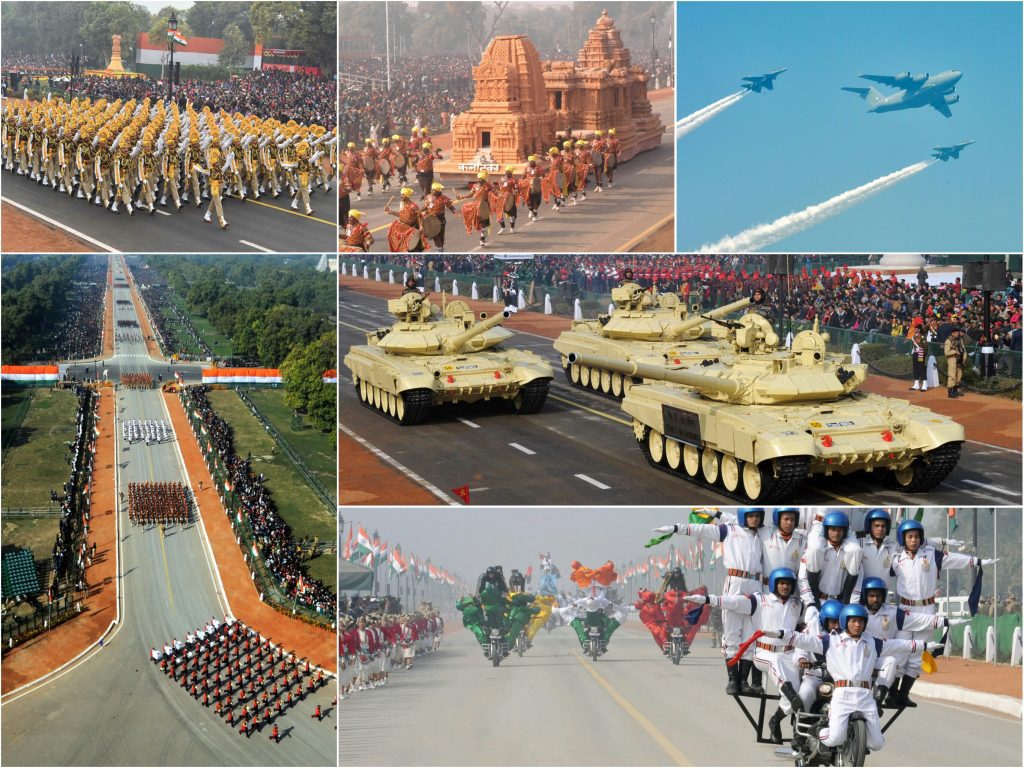- Private car and driver in Delhi / India
- +91-8447445445
- info@discoverindiabycar.com sugar.ankit@yahoo.com
 +91-9818434712
+91-9818434712
Republic Day
Diwali One of the main leaves of Hinduism, Jainism, and Sikhism is called Diwali, which is also spelt as Divali. The word” row of lights”( Deepavali) in Sanskrit is where the name” row of lights” originates. Generally speaking, the event represents the triumph of light over darkness.

History
During the Indian independence movement, India separated from the British Raj on August 15, 1947. British India was divided into two new independent Dominions of the British Commonwealth by the Indian Independence Act 1947, an Act of the United Kingdom Parliament, which brought about the country’s independence. India became a constitutional monarchy on August 15, 1947, with George VI serving as the head of state and the Lord Mountbatten serving as governor general. The amended colonial Government of India Act 1935 served as the framework for the country’s legal system because it was still without a permanent constitution at the time. On August 29, 1947, a resolution was put out to create the Drafting Committee, under the leadership of Dr. B. R. Ambedkar, with the charge of creating a permanent constitution.
As India commemorates its independence from British rule on Independence Day, it celebrates the implementation of its constitution on Republic Day. The committee delivered a draught constitution to the Constituent Assembly on November 4th, 1947.The Assembly met in open sessions for 166 days prior to the Constitution’s adoption, which took place over the course of two years, 11 months, and 17 days. Following extensive discussion and some revisions, the 308 Assembly members signed two handwritten copies of the agreement on January 24, 1950. Two days later, on January 26, 1950, it became effective universally. Dr. Rajendra Prasad’s first tenure as president of the Indian Union officially began on that day.The president addresses the nation in a speech the night before Republic Day.
Celebrations
The biggest Republic Day celebrations are held in New Delhi, the capital city, in front of the Indian President on the Rajpath. On this day, ceremonial parades are staged at the Kartvya Way in honour of India, its diversity and unity, and its illustrious cultural heritage.
Delhi Republic Day parade
The nation’s capital, New Delhi, hosts the Delhi Republic Day parade, which is organised by the Ministry of Defense. The centrepiece of India’s three-day Republic Day celebrations begins at the President’s residence, Rashtrapati Bhavan, and extends through the India Gate to Raisina Hill on Rajpath. India’s cultural, social, and military strength are on display in the parade. Nine to twelve distinct Indian Army units march past in full regalia and official insignia, along with the Navy and Air Force. The President of India, who serves as the Commander-in-Chief of the Indian Armed Forces, salutes back. There are also twelve contingents from various paramilitary groups and the Indian police force.

Fighting Back
The Beating Retreat tradition is performed after the official declaration that Republic Day celebrations are over. The occasion takes place on January 29, the third day after Republic Day, in the evening. It is performed by the bands of India’s three military services: the Indian Army, Indian Navy, and Indian Air Force. The Rashtrapati Bhavan and South blocks are where the ceremony will take place at the end of Rajpath, close to Raisina Hill and Vijay Chowk. The event’s primary guest will be the President of India, who will be protected by a cavalry unit known as the President’s Bodyguard (PBG). When the President arrives, the PBG commander instructs the unit to perform the National Salute, and the Army then plays the Indian National Anthem, Jana Gana Mana. The Army creates the ceremonial of display by the massed bands, in which bands from the Navy and Air Force as well as Military Bands, Pipe and Drum Bands, Buglers, and Trumpeters from various Army Regiments take part. At the conclusion, these bands play well-known songs like Abide With Me, which was Mahatma Gandhi’s favourite hymn, and Saare Jahan Se Achcha.
Distribution of prizes

The Indian President awards Padma Awards to Indian people on the eve of Republic Day each year. These are India’s second-highest civilian honours after the Bharat Ratna. The Padma Vibhushan, Padma Bhushan, and Padma Shri awards are given out in decreasing order of importance
- “Exceptional and meritorious service” honorary degree, Padma Vibhushan. India’s second-highest civilian honour is the Padma Vibhushan.
- In recognition of “distinguished service of a high degree,” Padma Bhushan. The Padma Bhushan is India’s third-highest civil honour.
- Acknowledgement for outstanding service The Padma Shri award. The Padma Shri ranks as the fourth-highest civilian honour in India.
- The Padma awards are national honours, however they do not come with financial perks, advantages, or special rail or air travel privileges.
A medallion and a certificate with the president’s signature make up the award. The winners also receive a second medallion, which they are free to wear at any ceremonial events like ceremonies or state meetings. A commemorative pamphlet that includes summaries of each award laureate is also made available to the public on the day of the investiture ceremony.








